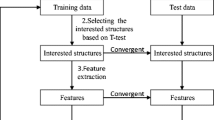Abstract
To study the early automatic recognition of Alzheimer’s disease, Alzheimer’s disease automatic recognition method is explored based on brain magnetic resonance of brain asymmetry image features. The method, according to the atrophy of related brain tissue of patients with Alzheimer’s disease, leading to the pathological characteristics of the asymmetry of left and right brain related anatomical structures, proposed to extract the shape and texture features of these anatomical structure as the asymmetry, and selected out the best feature subset that can characterize the lesion index as the method for automatic recognition of early Alzheimer’s disease. The automatic recognition test of the patient images in Southwest Hospital was performed by this method and compared with the expert automatic recognition. The results show that the automatic recognition method is obviously effective. Based on the above findings, it is concluded that the automatic recognition method of Alzheimer’s disease has good performance.

Similar content being viewed by others
References
Barbagallo, M., Dominguez, L., Prima, A.D., et al.: Oxidative stress and Alzheimer disease. Eur. Geriatr. Med. 3(4), S78–S78 (2012)
Ownby, R.L., Crocco, E., Acevedo, A.: Depression and risk for Alzheimer. Dis. Arch. Gen. Psychiatry 63(5), 530–8 (2013)
Liu, J., Tang, Q., Wang, Y., et al.: Defects’ geometric feature recognition based on infrared image edge detection. Infrared Phys. Technol. 67, 387–390 (2014)
Ries, C.X., Lienhart, R.: A survey on visual adult image recognition. Multimed. Tools Appl. 69(3), 661–688 (2014)
Savchenko, A.V.: Directed enumeration method in image recognition. Pattern Recogn. 45(8), 2952–2961 (2012)
Seidenari, L., Serra, G., Bagdanov, A.D., et al.: Local pyramidal descriptors for image recognition. IEEE Trans. Pattern Anal. Mach. Intell. 36(5), 1033–1040 (2014)
Ren, C.X., Dai, D.Q., Yan, H.: Coupled Kernel embedding for low-resolution face image recognition. IEEE Trans. Image Process. 21(8), 3770–83 (2012)
Nakhmani, A., Tannenbaum, A.: A new distance measure based on generalized image normalized cross-correlation for robust video tracking and image recognition. Pattern Recogn. Lett. 34(3), 315–321 (2013)
Mennesson, J., Saint-Jean, C., Mascarilla, L.: Color Fourier-Mellin descriptors for image recognition. Pattern Recogn. Lett. 40(1), 27–35 (2014)
Goltsev, A., Gritsenko, V.: Investigation of efficient features for image recognition by neural networks. Neural Netw. 28(28), 15–23 (2012)
Sharma, G., Sood, S., Singh Gaba, G., et al.: Image recognition system using geometric matching and contour detection. Int. J. Comput. Appl. 51(17), 48–53 (2013)
Makili, L., Vega, J., Dormido-Canto, S.: Incremental support vector machines for fast reliable image recognition. Fusion Eng. Des. 88(6–8), 1170–1173 (2013)
Heuer, S.: The influence of image characteristics on image recognition: a comparison of photographs and line drawings. Aphasiology 30(8), 943 (2016)
López-Rodríguez, P., Fernández-Recio, R., Bravo, I.: Computational burden resulting from image recognition of high resolution radar sensors. Sensors 13(4), 5381 (2013)
Upneja, R., Singh, C.: Fast computation of Jacobi–Fourier moments for invariant image recognition. Pattern Recogn. 48(5), 1836–1843 (2015)
Author information
Authors and Affiliations
Corresponding author
Rights and permissions
About this article
Cite this article
He, X., Chen, L., Li, X. et al. Brain image feature recognition method for Alzheimer’s disease. Cluster Comput 22 (Suppl 4), 8109–8117 (2019). https://doi.org/10.1007/s10586-017-1634-5
Received:
Revised:
Accepted:
Published:
Issue Date:
DOI: https://doi.org/10.1007/s10586-017-1634-5




